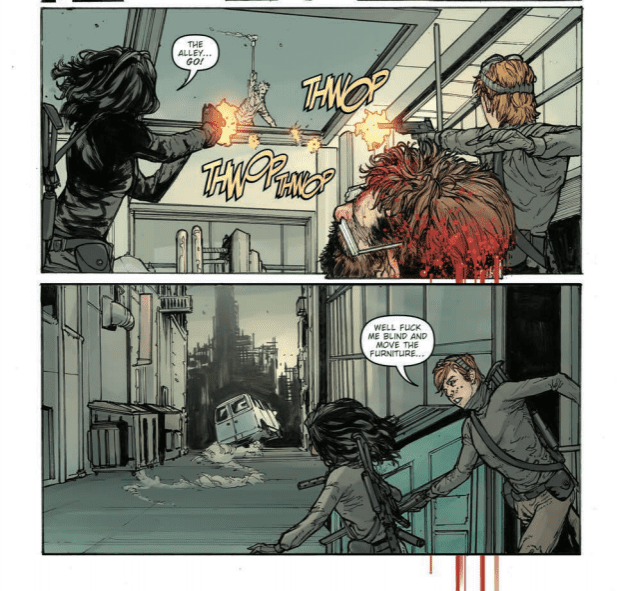IDW Publishing’s political thriller Pandemica, written by New York Times best selling author Jonathan Maberry, reaches its second explosive issue this week. Mixing modern political concerns with theoretical end world scenarios, Pandemica is a hard hitting apocalypse story that cuts close to the bone.
When new strains of old diseases start wiping out large populations of ethnic groups, a small undercover team try to uncover the cause. This leads to the uncovering of a disturbing conspiracy and a highly motivated white supremacy organisation hell bent on gaining control of the government, and then the world. But their plans are starting to slip out of their control. In a world of modified and untested diseases, is anyone safe?

Unsteady Beginnings
This is issue focuses on two characters and their actions in the ‘end days’. De, who the reader got to know in the previous issue, and Chick, a young more reckless agent. Maberry introduces them in action, raiding a secret bioweapons laboratory. He uses the situation to portray the main characteristics of both De and Chick so that the reader gets to know them by their actions.
At this point some of the script is difficult to swallow. The conversation between the two characters is forced with Chick’s attitude coming off as unnatural in the circumstances. De’s speech does not have the same affect so the problem lays with Maberry’s attempt to portray Chick’s personality.
This is not the only issue with the opening sequence. Some of the compositions within the panels are questionable, creating uncomfortable, sometimes unnatural, positions for the characters. There is even a lettering decision regarding De’s internal dialogue that is out of place and makes the words appear like an afterthought, added at the last moment.
However, to counter the negative, there are some wonderful little touches in that opening sequence and an important aspect of the narrative is revealed. The way in which it is revealed isn’t groundbreaking, via an interrogation with a predictable end, but the information itself adds extra depth and mystery to the story.
Alex Sanchez has an eye for exciting action shots. His use of stacked panels with images that cross the borders and gutters leads the reader through the pages at an alarming rate. His line work is precise and highly detailed in the foreground and the background. This produces some horrific images further down the line that really highlight the disturbing nature of the diseases spreading throughout America.

Building Visuals
The structure of the story is broken into two parts, one set in the present day and the other set in the future. In the first issue that jump was like an epilogue, similar in style to the final episode of the first series of Dollhouse. It was intriguing but also a contrast to the style of the rest of the comic. In this issue that step from present to future story-lines is more natural. Although there is still a big gap between the two time periods, and a lot of questions that need to be answered. It has, however, become clearer how the two are related.
Maberry is cleverly filling in the gap in the narrative, dropping plot points a bit at a time as if he is building a tower that the reader has already seen the top of. The tone of the two time periods is also creeping closer to each other thanks to the color work by Jay Fotos. There is still a distinct difference between future and past, mainly in the colors of the background, but Fotos is altering elements of the earlier time period to match the future world seen at the end of each issue.
As mentioned Sanchez’s artwork packs the panel’s with action, even during the conversational scenes set in labs or offices. There is a sense of urgency throughout which is mirrored in the placement of speech balloons by Shawn Lee. He breaks large speeches up into smaller segments, linked by touching balloons with a break in the outline. This extends the time within a number of panels but also emphasises personality traits of the characters speaking.

Conclusion
Pandemica has a hard hitting central theme. Ethnic cleansing and the rise of white supremacy is a terrifying part of the modern world. Maberry takes the hatred and single-mindedness to the Nth degree with disturbing consequences. However, after that initial shock, this reads like any number of political thrillers that can be found in comics or books. A series of set pieces move the narrative on but they are filled with cliches and obvious outcomes.
It is an enjoyable read, quick and easy, and will appeal to fans of the Jack Ryan series (in whatever format you enjoy the stories). It has elements of Dan Brown books mixed with the movie 28 Days Later. A weak start to the issue means that the comic is fighting to keep the reader interested but the later stages of the comic is where the best parts are.

